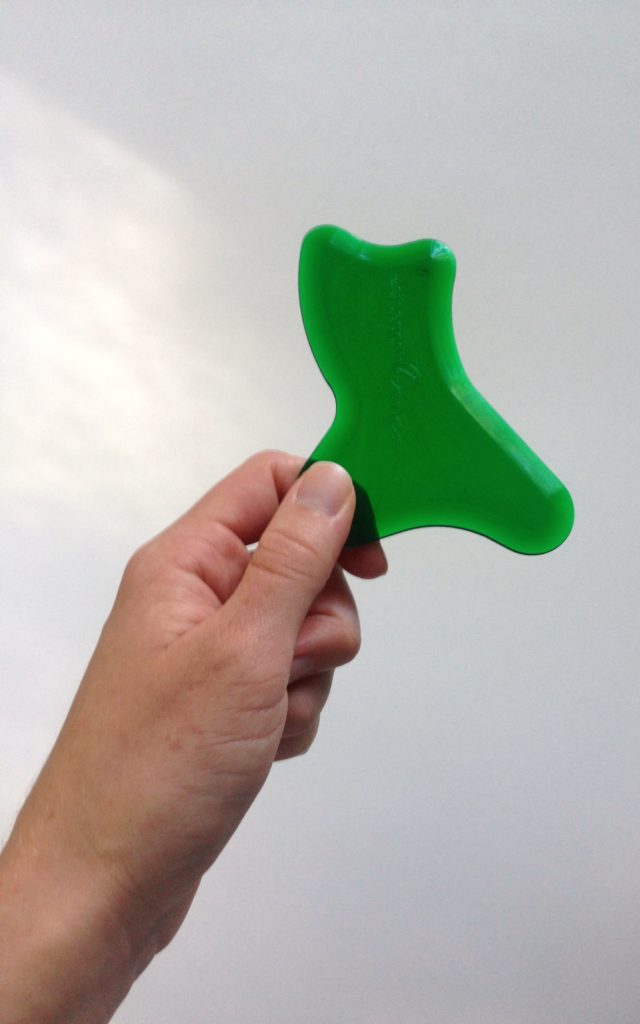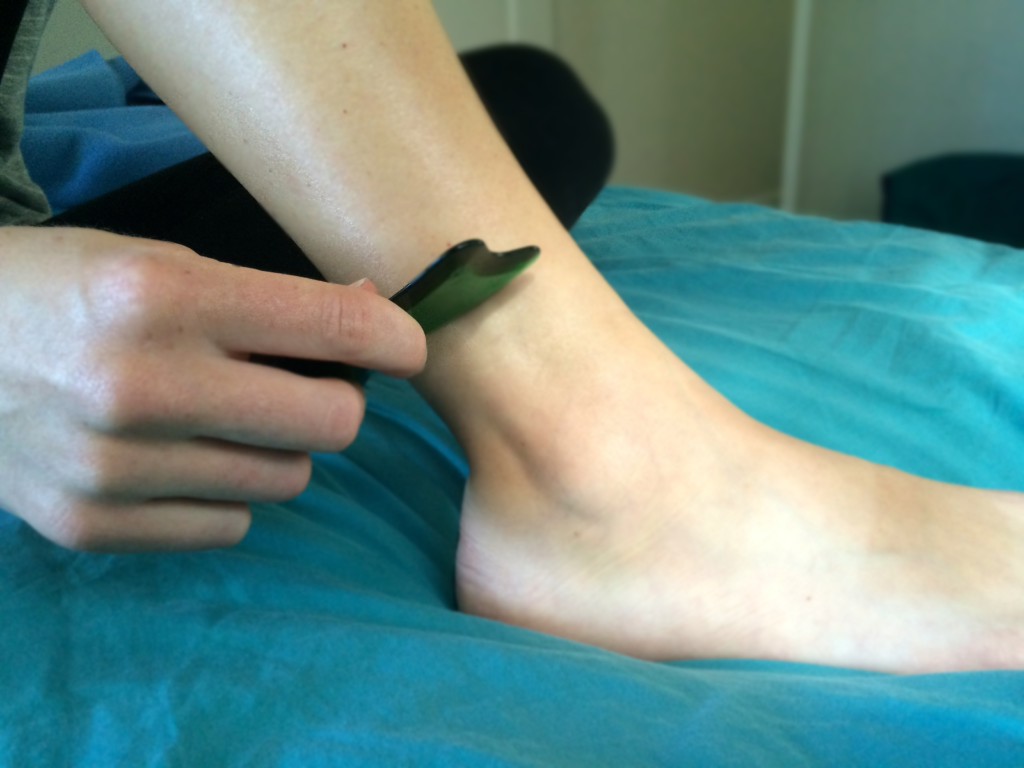Gua Sha Scraping for Pain and Recovery
For months my sprained ankle got worse after just about every treatment, except gua sha. My physical therapist first introduced it to me after hand massage started to be less effective, and I had instant results.

What is gua sha?
Gua sha is a traditional Chinese medicine technique of scraping the skin with a hard porcelain spoon or a jade scraper. Similar to Graston or ART, gua sha can help release tightness and improve recovery. While many people still use the traditional scrapers, newer plastic tools with different angles and edges are now available as well.
A gua sha practitioner will scrape down the skin around an injury until it becomes bright red or until the tissue begins to feel smoother under the tool. My physical therapist follows the tendons/muscles and scrapes up and down as well as across the tissues.
Benefits of Gua Sha
The hard plastic tool is used to break down tissue adhesions and improve scar tissue. It also helps increase circulation and clear out inflammation. Gua sha releases myofascial tension and increases mobility.
Many people use gua sha to improve their mobility and reduce chronic neck/back pain. It’s a great tool for general muscle recovery, and it is (in my opinion) extremely helpful after an injury.
The first time I had gua sha done I gained nearly 10 degrees of ankle flexion. That was HUGE for me. I had been stuck for weeks without improvement in my ankle motion. It also helped release some of the tension in my peroneal tendon and foot. The improved mobility and decrease in tightness also reduced my pain so much that I was willing to learn how to do the scraping myself.

Therapist or DIY?
I highly recommend starting with a licensed massage therapist or physical therapist. You absolutely want someone who knows what they’re doing the first few times. The location of your injury or pain is also going to limit you. It seems highly unlikely you will be able to scrape your own neck or back without causing some other strain or pain in the process.
It took me more than a month of weekly treatments before I felt comfortable enough to take the first steps to learn how to do it myself. There are lots of videos online, and after a few treatments you can get the basics down pretty well by watching/feeling. I was lucky enough to have my physical therapist teach me how to do it so I could continue my progress outside of our sessions.
It took me a while to get comfortable doing it myself. Gua sha scraping creates a horrible noise, and you can feel the bumpy, sticky quality of the tissue below. When I first started it felt like I had gravel under my skin. Just the thought of scraping by major trouble spots was enough to make me nauseous.
While I still have scar tissue and I scrape 2-3 times a week, it doesn’t bother me anymore. I’m more immune to the discomfort and the feeling of scraping myself. Although to be fair, I still prefer when someone else does it. It’s like when you accidentally pull your own hair and you get really mad at yourself for causing yourself pain. It’s just easier when it’s not your fault.
Gua Sha Tools
I started out with a plastic Asian spoon, but I eventually bought the $35 tool (GuaSha Orthopedic Soft Tissue Tool – 1 ) my PT uses. The spoon worked great for basic scraping, but once my scar tissue was less extreme, it was difficult for me to scrape my ankle effectively with the thicker spoon. I love the tool – I wish I had bought it sooner.
Things to Know
You might bruise. It takes a lot for me to bruise, so I usually have a little redness for a few minutes that fades. Some people get red marks that turn into bruises like this. I think it depends a lot on the practitioner, your injury, and the part of the body you are getting treatment on.
Bottom Line
I highly recommend trying gua sha if you have lingering pain or mobility issues. It’s less scary than cupping, but it has similar, powerful results.













